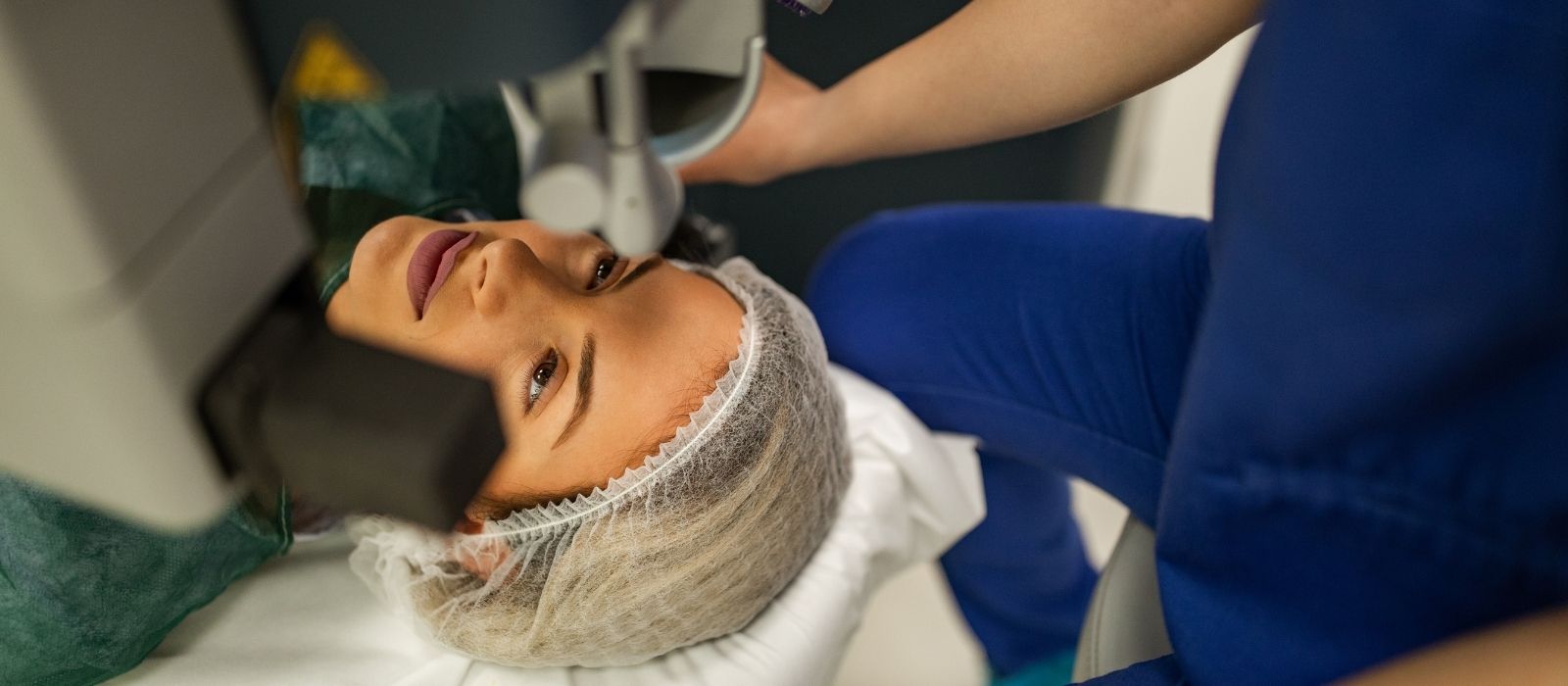 >
>
Trans PRK (Transepithelial Photorefractive Keratectomy) is a type of laser eye surgery that corrects vision issues such as nearsightedness, farsightedness, and astigmatism. Unlike traditional PRK, Trans PRK is a no-touch procedure that uses advanced laser technology to remove the outer layer of the cornea (epithelium) and reshape the underlying tissue to improve vision. This minimally invasive approach offers patients an effective alternative to LASIK, particularly for those with thinner corneas or other contraindications for flap-based procedures.
While both Trans PRK and other laser eye surgeries like LASIK and traditional PRK aim to correct vision by reshaping the cornea, there are key differences:
Good candidates for Trans PRK are typically those who have been diagnosed with refractive errors such as myopia, hyperopia, or astigmatism but are not suitable for LASIK due to thinner corneas, dry eyes, or other ocular conditions. Trans PRK is also a great option for patients involved in contact sports or jobs that require a high level of physical activity, as the flap-free nature of the procedure eliminates the risk of flap complications.
Trans PRK offers several unique benefits. First and foremost, it is a safer option for individuals with thin corneas or other eye conditions that make them ineligible for LASIK. Since no flap is created, there is no risk of flap-related complications, making it a reliable option for those with an active lifestyle. Additionally, the all-laser approach ensures precise and consistent results, providing excellent visual outcomes for most patients.
The Trans PRK procedure is relatively quick, usually lasting around 10-15 minutes per eye. The surgeon begins by applying numbing eye drops to ensure comfort. A laser is then used to gently remove the epithelium, followed by corneal reshaping with an excimer laser to correct the refractive error. No instruments touch the eye during the procedure, making it a completely touch-free process. Once the surgery is complete, a protective contact lens is placed over the eye to aid healing.
Recovery from Trans PRK typically takes longer than LASIK, as the epithelium needs time to regenerate. Patients may experience mild discomfort, dryness, or light sensitivity for the first few days following the surgery. Protective contact lenses are worn for 3-5 days to promote healing. Visual improvements begin within a few days, but full recovery can take several weeks. Eye drops are prescribed to reduce inflammation and prevent infection, and regular follow-up appointments are necessary to monitor progress.
Although Trans PRK is a safe and effective procedure, like all surgeries, it comes with potential risks. Some patients may experience temporary side effects such as dry eyes, halos around lights, or light sensitivity. In rare cases, more severe complications like corneal haze or under-correction may occur, which could require additional treatment. Discussing these risks with your surgeon beforehand will help you understand the procedure and manage expectations.
The long-term results of Trans PRK are generally excellent, with most patients achieving 20/20 vision or better after full recovery. While the healing process may take longer compared to LASIK, the visual outcomes are equally impressive, providing lasting vision correction. Some patients may experience fluctuations in vision during the first few weeks of recovery, but these typically stabilize within a few months. With proper care and follow-up, Trans PRK offers a durable solution to refractive errors.
Trans PRK in Istanbul is a popular choice for patients seeking high-quality eye care at affordable rates. Istanbul’s eye clinics are equipped with the latest technology and staffed by experienced ophthalmologists who specialize in laser eye surgeries. The city is a leading destination for medical tourism, offering world-class services and competitive pricing. Whether you're looking for an alternative to LASIK or a touch-free laser procedure, Trans PRK in Istanbul provides excellent care and outcomes.
If you have been told that you’re not a candidate for LASIK or if you prefer a no-touch laser eye surgery, Trans PRK might be the ideal option for you. With its safe, flap-free approach and long-lasting results, Trans PRK offers a great solution for patients with various refractive errors. Consult with a qualified ophthalmologist to determine if Trans PRK is the right choice for your vision correction needs and start your journey to clearer vision today.